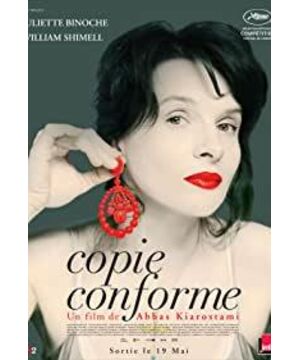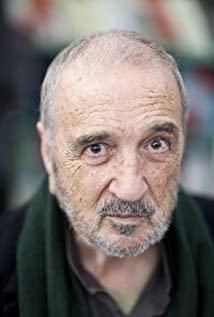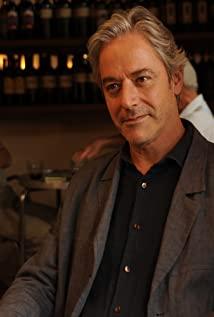The extensive comments on Original and Copy at the beginning of the film can't help but remind me of those literary criticism classes last semester, and the male protagonist's point of view is basically postmodern, thinking that original does not exist, and the so-called original is also a copy of other forms. So there is no clear dividing line between the two. And the large-scale lecture-style commentary at the beginning is obviously to pave the way for the narrative of the subsequent development of the story. The relationship between the hero and heroine is given as a stranger at the beginning, only because the heroine bought his book and asked him to sign it. The relationship started to get complicated when the restaurant was mistaken for a couple and role-playing began. When the two went to the statue pond, church, and western restaurant, the dialogue between the two began to show information that was not given in the previous story, causing the audience to wonder what the relationship between the two was. The story also came to an end when the two came to the hotel where they lived together 15 years ago to reminisce about the past. The whole narrative is like a spectrum, showing the audience the various forms of a man and a woman from strangers to marriage to divorce. I think the transition is handled quite well. The director deliberately throws us more and more information step by step. It's a chaotic and confusing situation, and when the story comes to the end, and when you look back at the entire story, you will find that many details that were not understood at the beginning are suddenly explainable. For example, why is the heroine late for the new book launch meeting, knows the translator, absent-mindedly listens to the lecture but asks to meet the writer. And why there are so many tit-for-tat and even embarrassing conversations between two people who continue to get along. And when discussing family and children, why does the female lead say that the male is irresponsible for no reason. But there will also be many unsolved mysteries from the tail forward. If the inspiration for the male protagonist's book comes from a mother and son, and the female protagonist's reaction seems to be about her and her son, why not say it directly, and Don't seem to know them at all? If it is said that they are strangers and then they are too involved in role-playing, then they are quite capable, and they can round up each other's stories and pick up conversations quickly. Overall, the drama-style intensive dialogue leaves the audience with too much information and too many mysteries to explain. It's amazing that there is a feeling of reading a novel but it is not an adaptation. In the process of watching, I constantly have the urge to flash back and re-read the previous information, and I keep asking myself whether it is true or not. This kind of viewing experience is exactly what the director wants to create, simulating the process of art critics identifying the authenticity of artworks.
One of the interesting features of the viewing process is the language switching, from English, when the two are still strangers, relatively polite and distant, to English, French, and Italian when the relationship becomes more complicated. Chinese people still have English/Cantonese bilingual subtitles. Sometimes they are busy watching the top and bottom together, and listening to the bilingual channels together, it is messy. . . But it really reflects the sense of estrangement that cannot be switched and cannot be integrated in different cultures, which means marriage, or any relationship between people. Recognizing this relationship between people, the female protagonist hopes to seek common ground while reserving differences, tolerate each other and continue to live; while the male protagonist still insists on himself and runs off the train at 9 o'clock, but it is also possible to change his mind after washing his face, just like in a restaurant It's like going out after a while and coming back.
Another interesting point is that at the beginning of the film, the male protagonist was late for the press conference. Later, the female protagonist came in later than the male protagonist, and chatting on the mobile phone was very lively. As a result, there were also people in the front row who were late in our cinema. Take a seat, look at the screen, and then look at the real performance around. I have to say that the director is quite thoughtful, and I don't know if it was intentional.
All in all, it's a good movie, and according to postmodern theory, a good metafiction can point to its own narrative itself, allowing readers/viewers to reflect on the work itself. In this sense, although this movie is an original story, its meaning is not original, but it follows a relatively classic proposition of postmodern theory, and it is also a copy when it is traced back to its source. However, even the copy can achieve the effect expected by the director. Recommended to see.
View more about Certified Copy reviews











